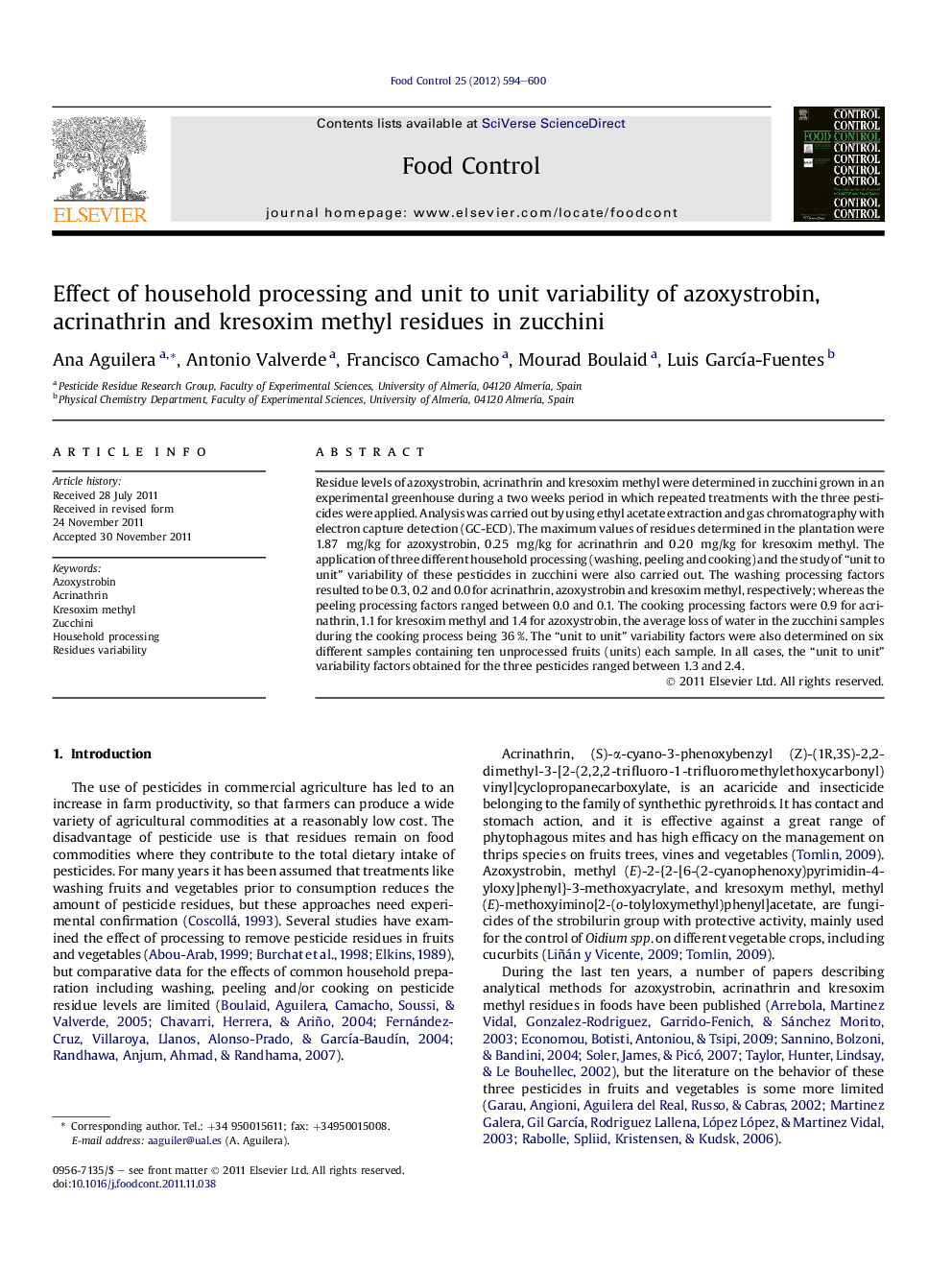| کد مقاله | کد نشریه | سال انتشار | مقاله انگلیسی | نسخه تمام متن |
|---|---|---|---|---|
| 6393607 | 1330454 | 2012 | 7 صفحه PDF | دانلود رایگان |

Residue levels of azoxystrobin, acrinathrin and kresoxim methyl were determined in zucchini grown in an experimental greenhouse during a two weeks period in which repeated treatments with the three pesticides were applied. Analysis was carried out by using ethyl acetate extraction and gas chromatography with electron capture detection (GC-ECD). The maximum values of residues determined in the plantation were 1.87Â mg/kg for azoxystrobin, 0.25Â mg/kg for acrinathrin and 0.20Â mg/kg for kresoxim methyl. The application of three different household processing (washing, peeling and cooking) and the study of “unit to unit” variability of these pesticides in zucchini were also carried out. The washing processing factors resulted to be 0.3, 0.2 and 0.0 for acrinathrin, azoxystrobin and kresoxim methyl, respectively; whereas the peeling processing factors ranged between 0.0 and 0.1. The cooking processing factors were 0.9 for acrinathrin, 1.1 for kresoxim methyl and 1.4 for azoxystrobin, the average loss of water in the zucchini samples during the cooking process being 36 %. The “unit to unit” variability factors were also determined on six different samples containing ten unprocessed fruits (units) each sample. In all cases, the “unit to unit” variability factors obtained for the three pesticides ranged between 1.3 and 2.4.
⺠Residue level and processing factor for three pesticides (azoxystrobin, acrinathrin, kresoxim methyl) in zucchini. ⺠Household processing studied: washing, peeling, cooking. ⺠Peeling and washing were the treatments more effective. ⺠“Unit” to “unit” variability factor ranged between 1.3 and 2.4.
Journal: Food Control - Volume 25, Issue 2, June 2012, Pages 594-600